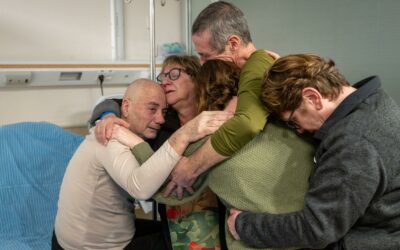Understanding Retinoblastoma: Genetics, Treatment, and Global Impact
In a recent video presentation, Prof. Didi Fabian, a senior ocular oncologist at Sheba’s Goldschleger Eye Institute and Director of Sheba Global Ophthalmology, discussed retinoblastoma, a cancer of the eye that primarily affects infants and toddlers. Emerging from genetic mutations within the retina, retinoblastoma is readily identifiable and treatable if caught early. In high-income countries, the survival rate for this deadly disease is nearly 100%. Unfortunately, on a global scale, particularly in countries with limited healthcare access, survival rates are less optimistic.
Germline Cases
Retinoblastoma arises from a genetic mutation affecting both alleles of the RB1 gene, located on chromosome 13. Germline cases already harbor one mutation, making them susceptible to retinoblastoma. With the acquisition of a second mutation, the disease inevitably manifests. Although single mutations can occur in anyone, the majority of individuals possess a protective gene.
Familial Retinoblastoma
Familial retinoblastoma occurs in children with a family history of the disease. In this form, there is an inherited predisposition to develop the disease due to a genetic mutation transmitted from one generation to another. The hereditary variant of retinoblastoma arises from mutations in the RB1 gene, crucial for regulating cell growth and division. Individuals carrying a mutation in one copy of the RB1 gene have an increased risk of developing retinoblastoma. In familial instances, this mutation exists in germline cells, which means it can be passed onto offspring.
Non-Germline Retinoblastoma
50% of retinoblastoma cases are non-germline. Children who contract this variant are born without any mutations, but simply develop one as they grow. Unfortunately, the reasons for such mutations are unknown.
Treatment
Roughly 8,000 cases of retinoblastoma are diagnosed every year, but with advanced diagnostics and treatments, cell eradication, vision preservation, and the minimization of long-term effects are readily achievable. Treatment options vary: surgery (such as enucleation) is typically reserved for advanced cases where vision loss is irreversible, while laser therapies like photocoagulation and thermal therapy are employed for milder cases.





